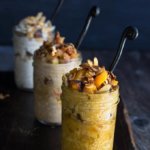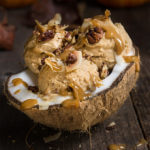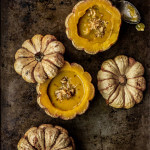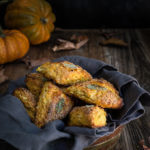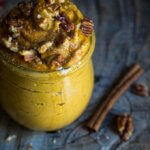Tikvenik is a traditional Bulgarian pumpkin strudel made of sweet, juicy pumpkin, gently kissed with cinnamon, then tossed with walnuts and rolled into crispy, buttery phyllo dough parcels. Pure, simple, and utterly divine.
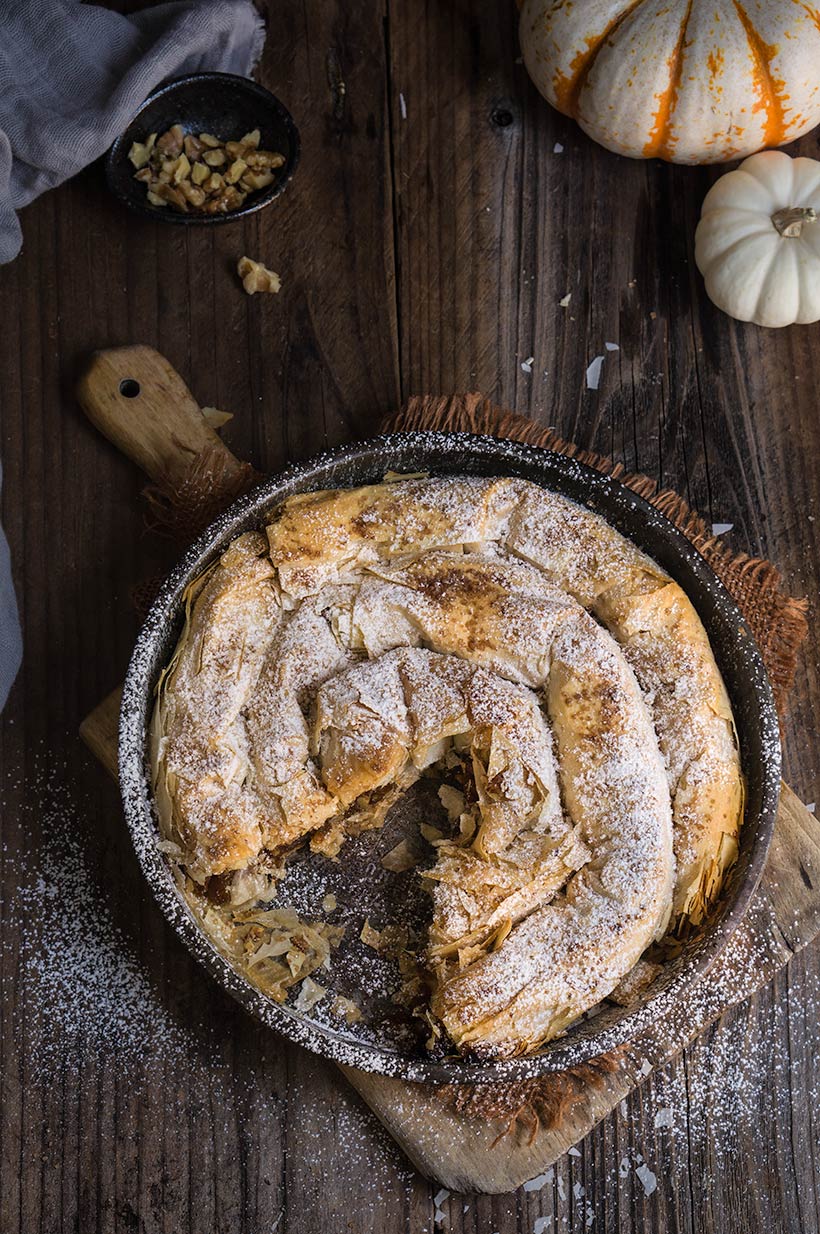
Nothing spells out fall, quite like the sight and taste of pumpkin! And there is no busier, or more exciting time in the kitchen than now. With all the new crops of pumpkins, apples, pears and pomegranates, it’s hard to decide which one goes on the chopping block first! The sheer variety of the produce – the best of both seasons’ – is overwhelming, I have to admit. But one way or another, more often than not, the pumpkin and its squash cousins find their way to the top of my list.
Even with this one ingredient, I have a longer queue of new recipes to try, than hours I could spend in the kitchen. But after a few weeks of pumpkin experiments, I decided to dig deep into my roots, and share with you this old, tried and true recipe for a Bulgarian pumpkin strudel a.k.a. tikvenik. It is the ‘pumpkin pie’ of my childhood, and it’s pure pumpkin heaven! Prepare to be blown away!
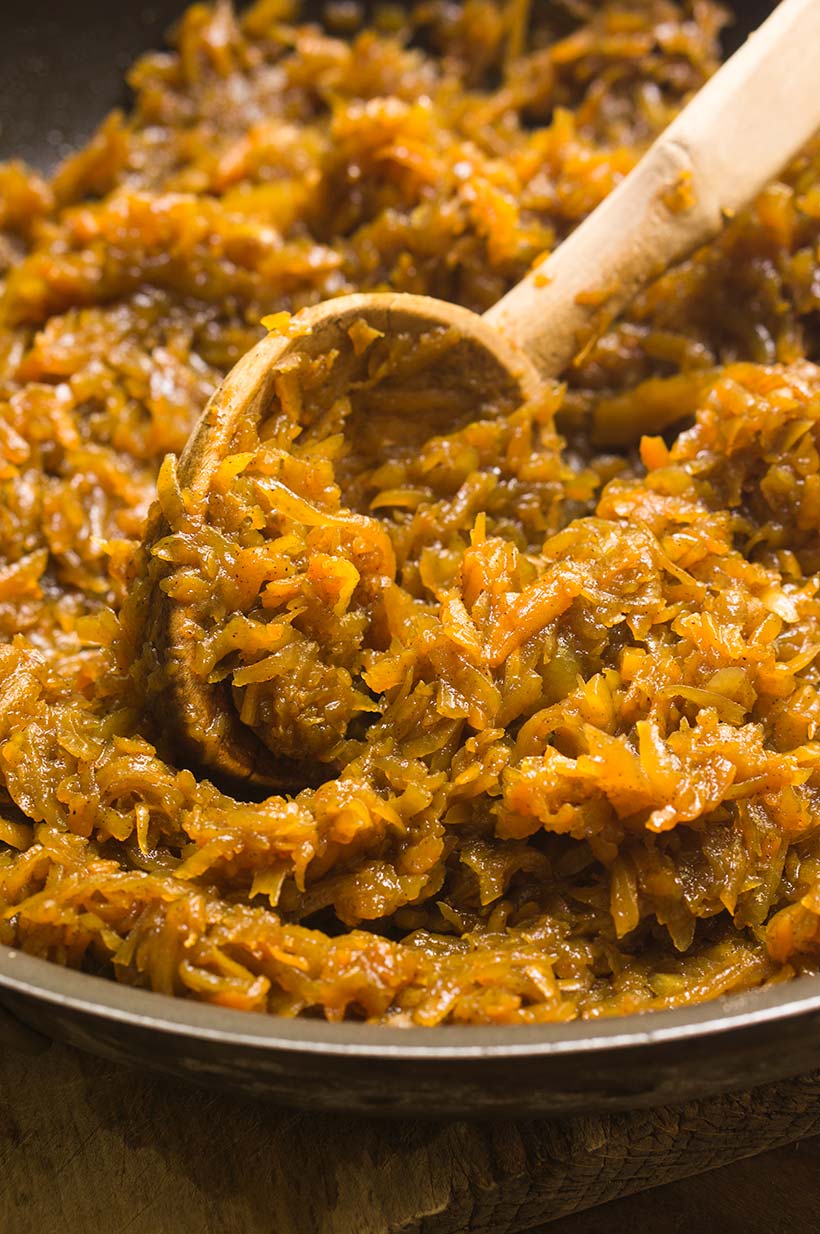

Tikvenik is a staple in the Bulgarian cuisine, and something that my mom and grandma would make on repeat throughout the season. Every household has their own recipe, but despite the variations, the strudel is really simple. With only 6 ingredients, it really highlights the essence of pumpkin flavor, and takes your taste buds on an exciting new pumpkin adventure.
Traditionally, the pumpkin strudel is lightly sweetened with sugar, and barely spiced with cinnamon. Back in the day, the pumpkins were real and sweet, and sugar was a luxury. Even today, in some parts of the country, people still make it with no added sugar. Don’t worry though, my version has enough sugar to qualify as a dessert, even though the end result may vary depending on how sweet your pumpkin is to begin with. I put a little less than 2/3 cup of sugar, to 750 g of pumpkin. If you opt to use less sugar in the filling, you can always compensate by generously dusting the strudel with powdered sugar after it bakes. Te pastry can be served as a dessert but also for breakfast or snack, as it has that slightly savory element from the dough.
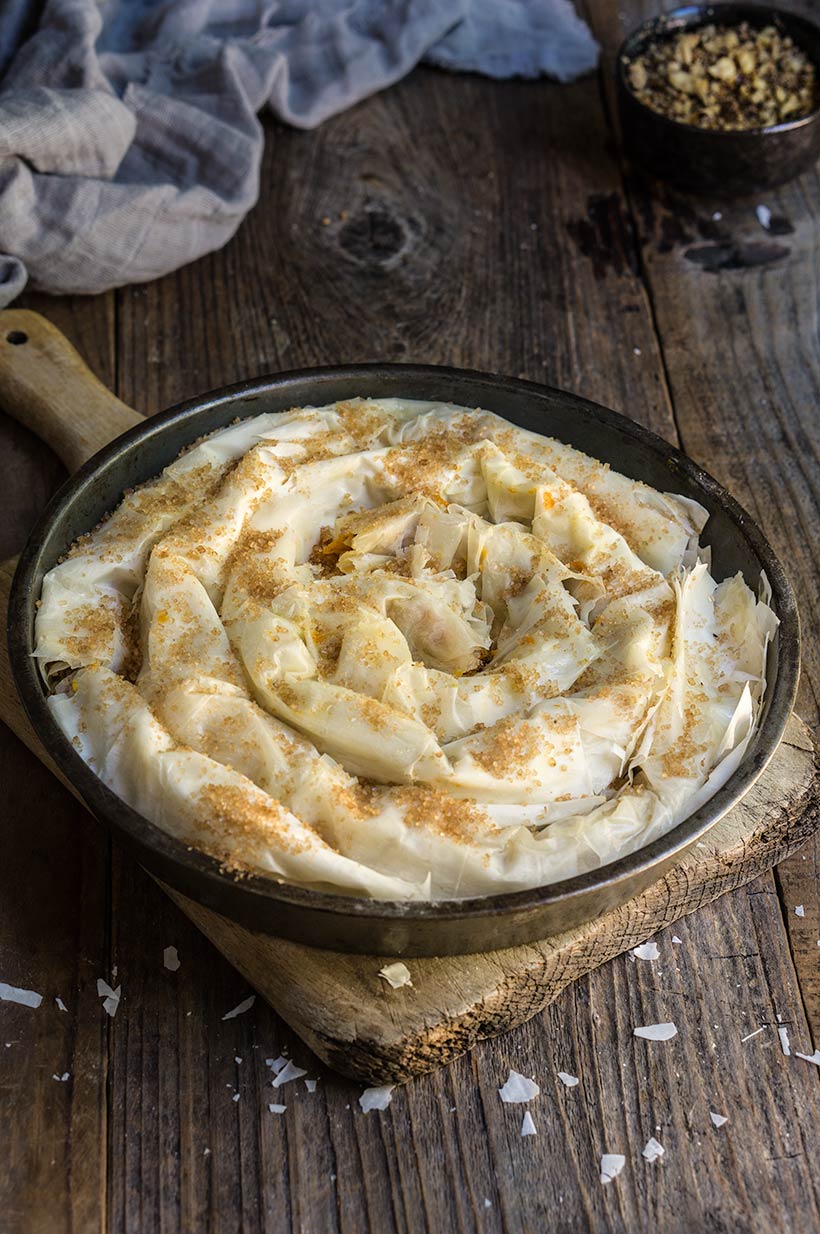
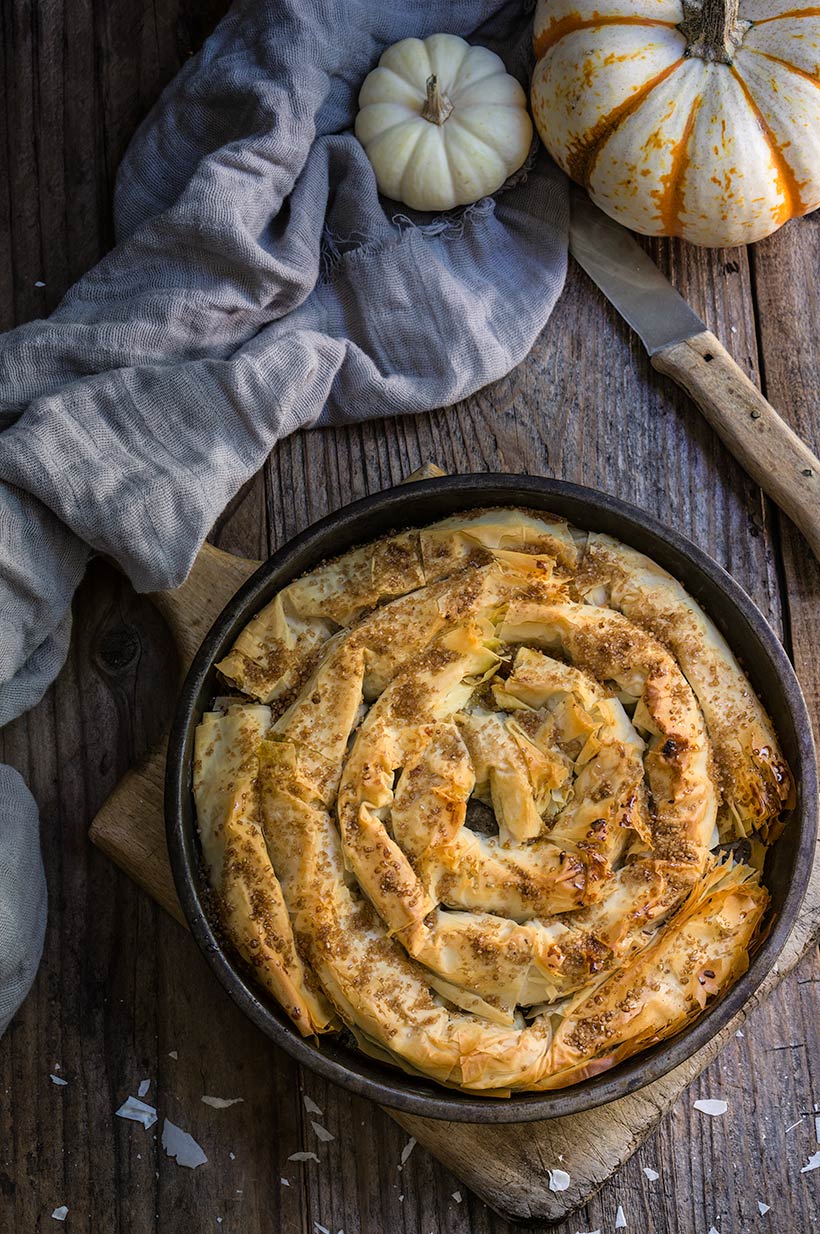
I like to use butternut squash for its sweeter, milder taste, but if you have a good, sweet pumpkin variety, by all means use that. The pumpkin is first grated, then quickly cooked in butter, with cinnamon and sugar, until fragrant and slightly softened. Due to the large amount of pumpkin (almost 2 pounds), I strongly suggest that you use your food processor to grate the flesh. The pumpkin filling is mixed with walnuts, and wrapped in thin sheets of phyllo dough, generously brushed with butter, then rolled into coils, and baked. The contrast of soft and crispy, sweet and savory, with nutty, buttery undertones, is out of this world, and it’s what makes it so addictive. Even my pumpkin-hating daughter cannot stop eating it.

If you’ve never worked with phyllo dough, don’t be intimidated. Despite its finicky nature, it’s actually very forgiving. If your dough is fresh, it will be easier to work with as the sheets are soft and pliable, and separate easily. If the dough has stayed in the fridge too long and dreid out, the sheets may get brittle and hard to roll. Or, if the phyllo dough has been defrosted multiple times, the sheets may stick together, and tear. Even if this is the case, you can still make it work. Rather than folding the sheets into rolls and coils, layer them into a rectangular baking dish. As long as you sprinkle some melted butter in between the sheets, and layer them a few on top of each other, broken or not, you’ll still get a yummy, crispy, buttery crust.
There are different ways of layering the phyllo dough sheets, but the end result is pretty much the same. I roll mine into long logs, then coil them around each other, and bake them in a round baking dish. You can also stack a couple of sheets on top of each other, brushing with butter each one, then spread the filling over the whole area, place a couple more phyllo sheets, and filling, and continue this pattern until all your filling is over. Taste-wise, and even texture-wise there won’t be much difference.
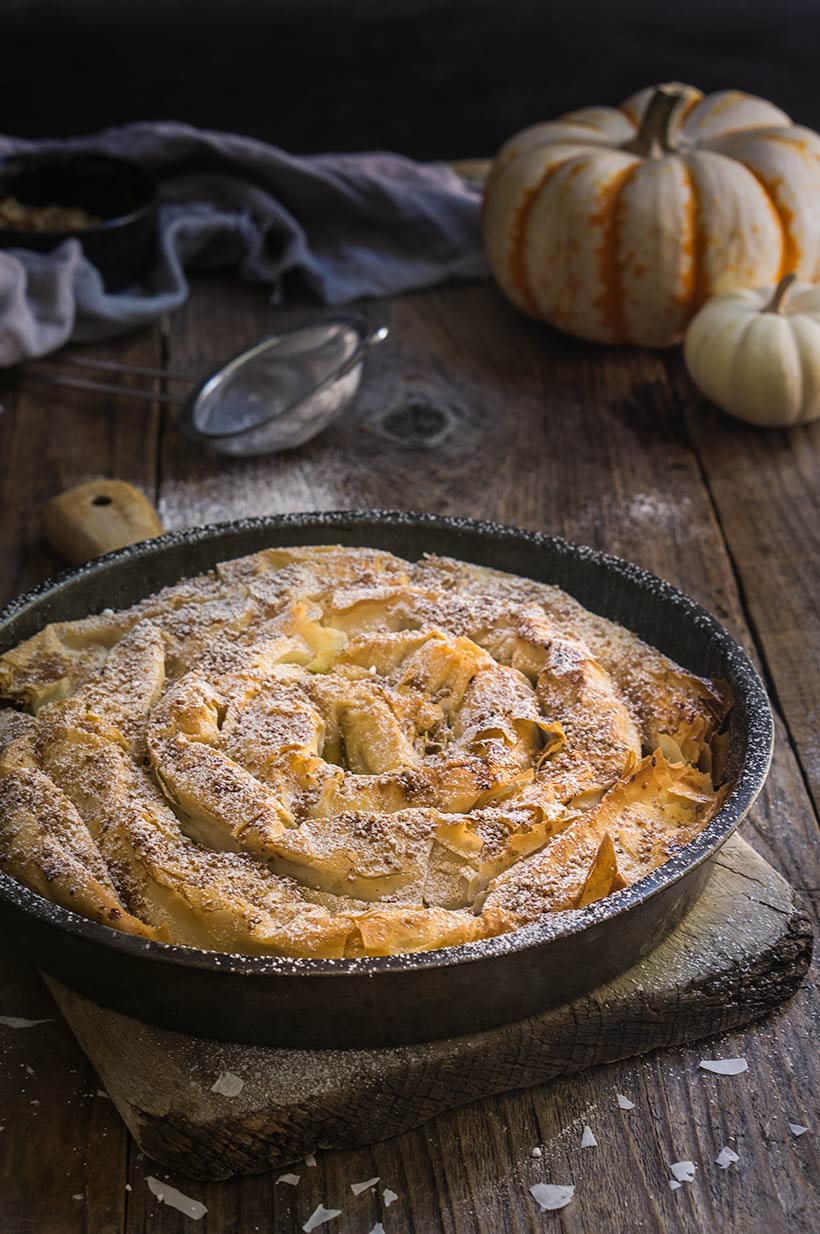
In virtually all phyllo dough recipes, or videos, you will be advised to cover the sheets with damp towel. As someone who grew up with phyllo dough, I’ve never seen my mom or anyone else do this, and I think it’s unnecessary. As long as you don’t take more than 15-20 minutes to work with the dough, you will be fine not using a damp towel. If you’re not quite sure, just cover it with the plastic wrap the package comes with, and that’s more than enough.
Ok, enough talking. It’s time to do some baking. Roll your sleeves and try this life-changing, pumpkin strudel, and be sure to leave me a comment and let me know how it turned out!
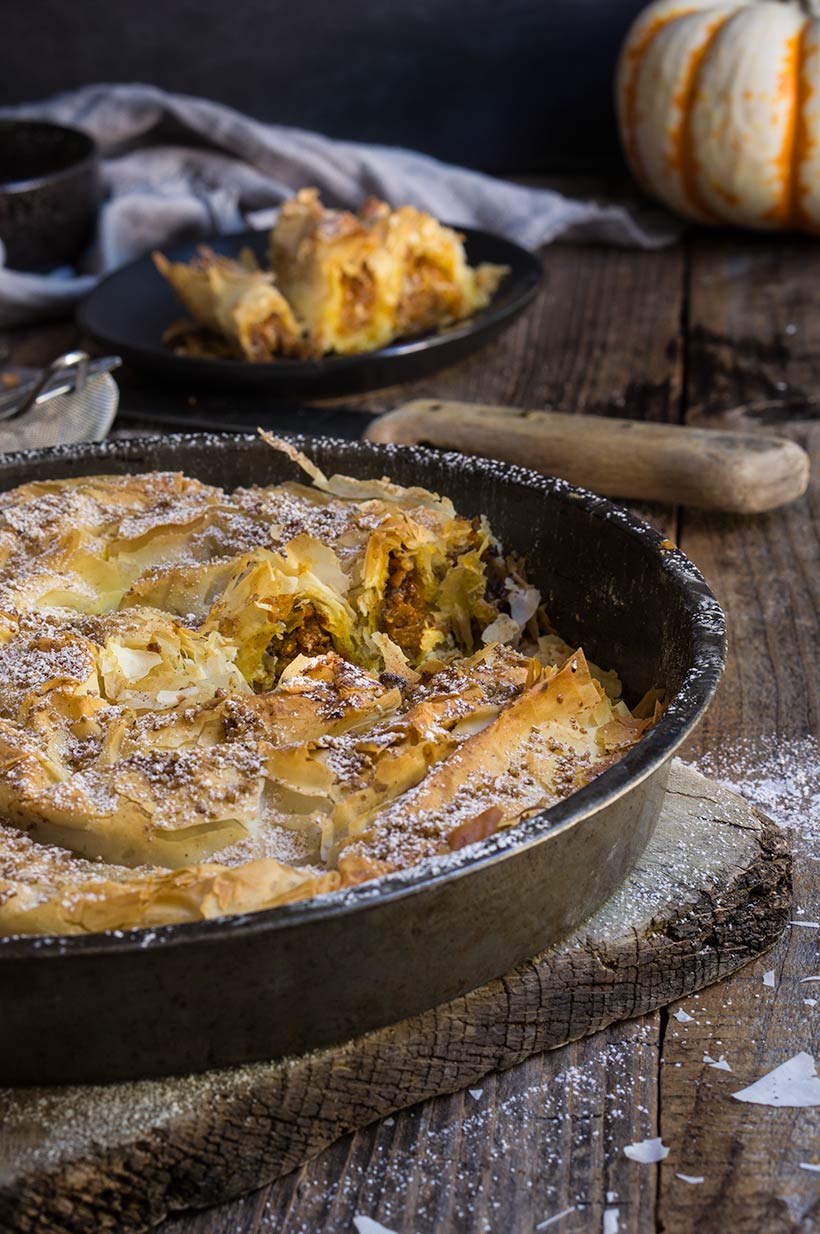
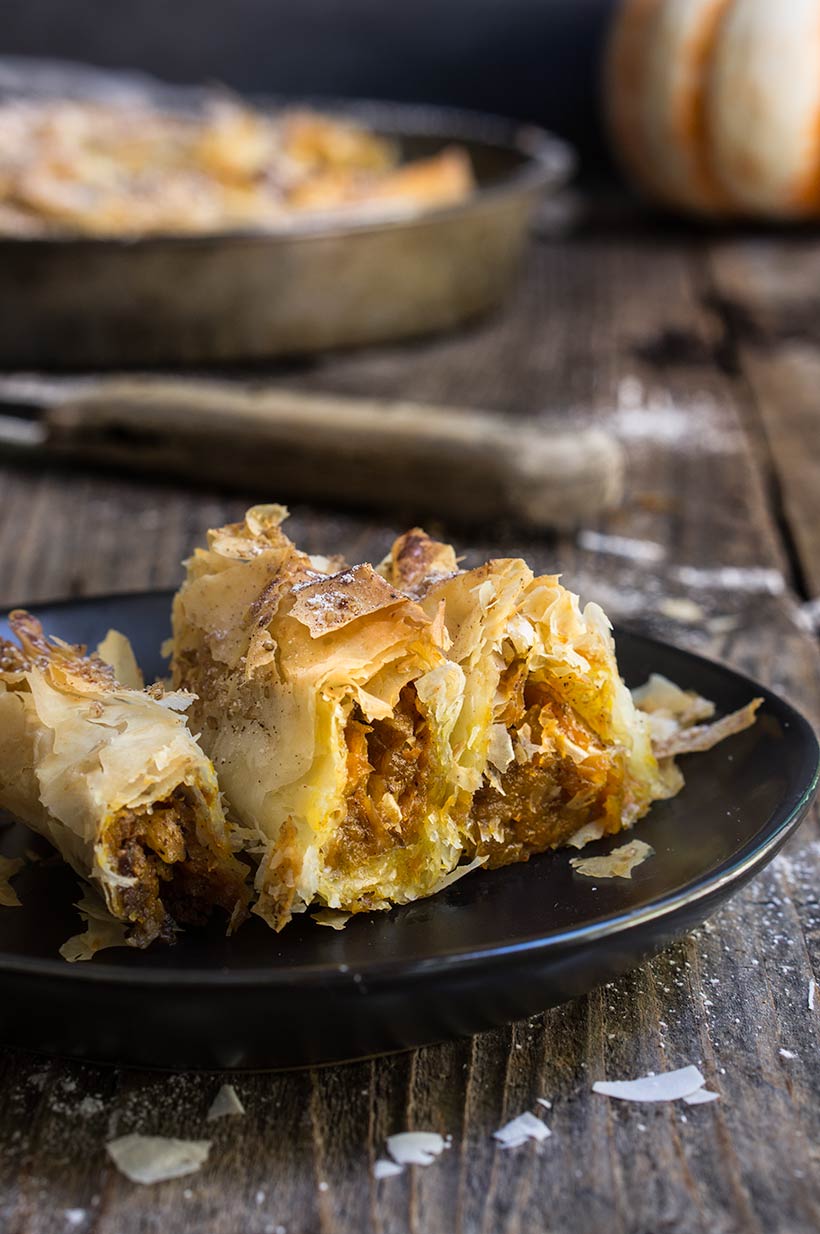
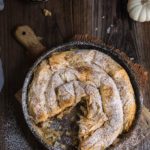
Pumpkin strudel - sweet, juicy pumpkin, gently kissed with cinnamon, then tossed with walnuts and rolled into crispy, buttery phyllo dough parcels.
- 750 g butternut squash or pumpkin, grated (6 cups)
- 2/3 scant cup of sugar
- 4 Tbs butter
- 1 tsp cinnamon
- 1 1/2 cups walnuts (preferably toasted, but raw will work just fine)
- 12-14 sheets of phyllo dough
- 1/2 cup melted butter, for brushing the phyllo sheets (can replace half with grape seed or other neutral oil)
- 6 Tbs coarse sugar (Demerara or Turbinado) for sprinkling
- powdered sugar and cinnamon for dusting
-
Peel and grate the flesh of one medium butternut squash, or sweet pumpkin.
-
In a larger pan, melt the 4 Tbs butter, add the grated pumpkin, the 2/3 cup of sugar, and the cinnamon. Cook for 5-6 minutes, until the pumpkin has softened.
-
Preheat the oven to 350 °F. Chop the walnuts, and lightly toast (optional, but adds more flavor). Melt the remaining butter for brushing the phyllo pastry.
-
On a flat surface, unfold the phyllo dough sheet stack. Brush the top most sheet with melted butter, and flip the sheet over onto the second top most sheet, trying to align them as much as possible.
Brush the other side of the top sheet with melted butter, and spread about 1/2 cup of the pumpkin filling, plus 3-4 Tbs of walnuts, along the longer side of the phyllo sheet. Optionally, sprinkle some of the coarse sugar all over the surface.
Take the two top sheets, and roll them over the filling, into a long cylinder. Shape it into a tight coil, and place in the center of a round baking dish. Repeat with the remaining dough and filling.
-
Brush the surface of the coiled strudel with melted butter, and sprinkle with coarse sugar. Bake for 40-45 minutes, or until golden. Dust with powdered sugar, and a dash of cinnamon. Best served at room temperature.

